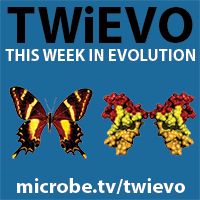TWiV 484: Float like a mimivirus STING like a bat
The TWiVumvirate discuss the giant Tupanvirus, with the longest tail in the known virosphere, and dampened STING dependent interferon activation in bats. <span data-mce-type=”bookmark” style=”display: inline-block; width: 0px; overflow: hidden; line-height: 0;” class=”mce_SELRES_start”></span><span data-mce-type=”bookmark” style=”display: inline-block; width: 0px; overflow: hidden; line-height: 0;” class=”mce_SELRES_start”></span> Click arrow to play Download TWiV 484 (53 MB .mp3, 87 min) Subscribe (free): iTunes, RSS, email …
TWiV 484: Float like a mimivirus STING like a bat Read More »

